The Kalahari Desert, a vast and unforgiving expanse spanning across Southern Africa, is a realm of extremes where life flourishes against all odds. The animals of the Kalahari Desert have evolved extraordinary adaptations to endure the harsh conditions and scarce resources.
Table of Contents
From the iconic meerkats with their sentinel behavior, standing guard over their burrow communities, to the enigmatic aardvarks emerging under the cover of night to feed on ants and termites, the Kalahari’s residents showcase the brilliance of nature’s resilience.
The desert is also inhabited by the majestic gemsboks, with their striking horns and impeccable water-conservation abilities, along with the cunning black-backed jackals that navigate both the desert’s predators and its occasional bounty.
Exploring the lives of these creatures unravels a narrative of tenacity, cooperation, and innovation. Their tales stand as a testament to the boundless ingenuity of life when faced with adversity, reminding us of the intricate web of existence woven in one of the world’s most challenging environments.
List of Animals of Kalahari Desert
African Elephant
African Lion
Cheetah
Gemsbok (Oryx)
Meerkat
Springbok
African Wild Dog
Black Rhino
Secretary Bird
Martial Eagle
Sociable Weaver
Kalahari Scrub Robin
Pale Chanting Goshawk
Crimson-breasted Shrike
Kori Bustard
Puff Adder
Cape Cobra
Namaqua Chameleon
Horned Adder
Desert Rain Frog
Dung Beetle
Kalahari Desert Scorpion
Mantis
Kalahari Tent Tortoise
Camel Thorn Tree
Quiver Tree
Hoodia Plant
Devil’s Claw Plant
Geographic Location and Characteristics:
The Kalahari Desert sprawls across 900,000 square kilometers of Southern Africa, encompassing parts of Botswana, Namibia, and South Africa. Contrary to its name, it’s not a true desert but a semi-arid savannah, distinguished by its red sand dunes, expansive grasslands, and sparse vegetation.
The region experiences erratic rainfall, with the summer months seeing brief but intense thunderstorms. Its temperatures fluctuate widely, from scorching daytime heat to chilly nights. Despite these challenges, the Kalahari is a mosaic of life, supporting a diverse array of flora and fauna.
African Elephant:
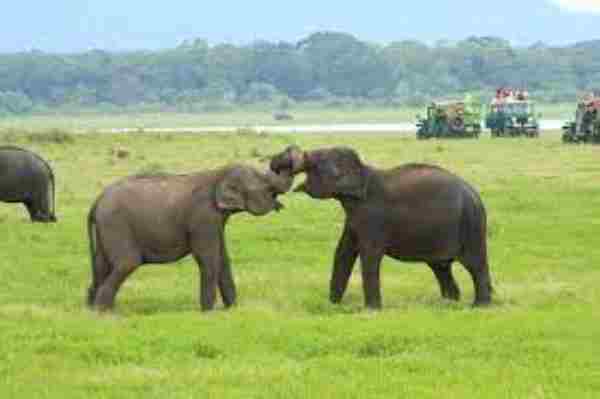
The African Elephant, the world’s largest land animal, finds its home in the Kalahari Desert’s diverse landscape. Despite the arid conditions, these majestic creatures have adapted to the environment, relying on an intricate social structure and long migrations to find water and food. Their ability to extract moisture from vegetation and dig for water sources showcases their remarkable survival strategies.
African Lion:
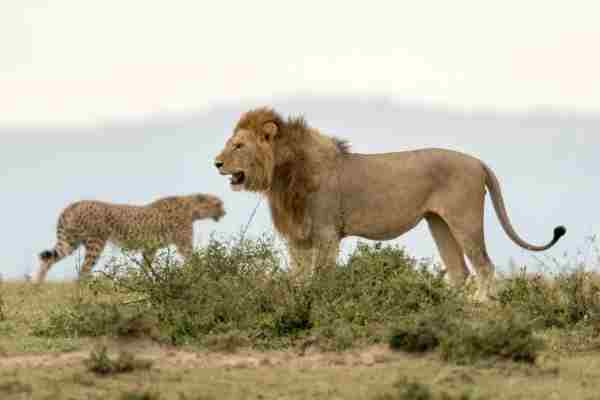
The Kalahari is a realm of unique predators, and the African Lion reigns as its apex predator. These lions have evolved to cope with extreme temperatures and limited resources. Their distinctive black manes not only serve as a sign of maturity but also provide protection against the sun’s intense rays. Living in pride, they exhibit exceptional teamwork during hunts, making them efficient hunters and survivors in the harsh desert environment.
Cheetah:
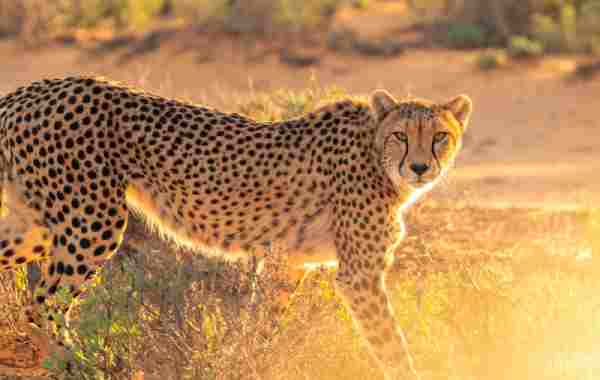
The Kalahari’s open plains provide the perfect habitat for the cheetah, the fastest land animal. Their lightweight build, distinctive black “tear tracks,” and incredible speed make them adept hunters of the region. Their slender bodies minimize heat retention, crucial for survival in the desert’s sweltering temperatures. Despite their hunting prowess, cheetahs often face competition from other predators, showcasing the complex interplay of life in the desert ecosystem.
Gemsbok (Oryx):

The gemsbok, or oryx, is an iconic desert antelope known for its striking appearance and remarkable adaptations. With its long, straight horns that can reach nearly four feet in length, the gemsbok is well-equipped to defend itself against predators and to spar for dominance. Their bodies have evolved to minimize water loss, allowing them to traverse the arid landscape in search of forage and sustenance.
Meerkat:
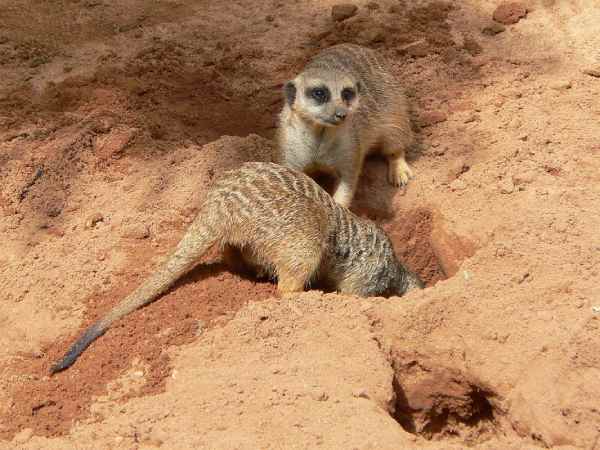
One of the most social and iconic creatures of the Kalahari Desert, meerkats are renowned for their cooperative behavior and sentinel roles. Living in tight-knit family groups, these small mammals take turns standing guard, scanning the horizon for potential threats while other members forage for insects and small prey. Their communal living and vigilant nature are vital strategies for survival in an environment teeming with predators.
Springbok:
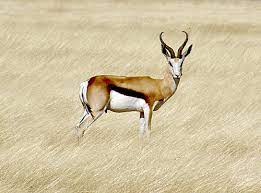
The springbok, a medium-sized antelope, undertakes one of the most captivating survival behaviors in the Kalahari. In times of danger, these agile creatures perform extraordinary leaps known as “pronking.” This behavior serves multiple purposes, from disorienting predators to showcasing their vitality and stamina. Their ability to subsist on a diet of desert plants and their unique escape tactics highlight their role as resilient inhabitants of the arid ecosystem.
African Wild Dog:

Also known as painted dogs, African wild dogs thrive in the Kalahari’s challenging terrain. Their cooperative hunting strategies and intricate social structures set them apart. These carnivores communicate through vocalizations and maintain a strong sense of community, relying on group efforts to bring down prey. However, their population is threatened due to habitat loss and conflicts with human activities, underscoring the delicate balance between wildlife conservation and human development.
Black Rhino:
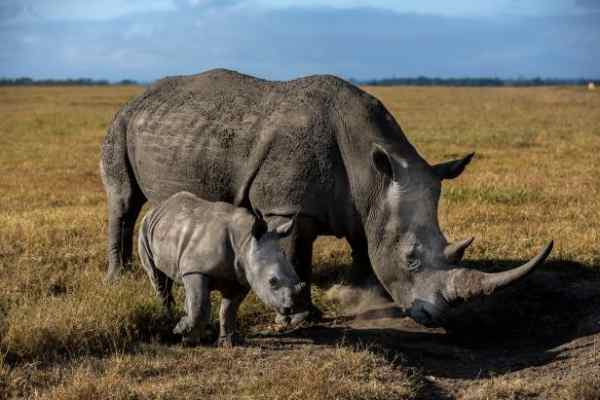
The black rhinoceros, though critically endangered, still inhabits pockets of the Kalahari Desert. These solitary creatures have adapted to the arid conditions by possessing a prehensile lip that allows them to grasp and feed on thorny desert vegetation. Despite their resilient adaptations, they face severe threats from poaching and habitat loss, making their survival a crucial concern for conservationists.
Secretary Bird:

With its distinctive appearance and impressive hunting skills, the secretary bird is a prominent avian resident of the Kalahari. Its long legs and unique method of hunting – stomping on prey with its powerful feet – set it apart. Often found striding across the savannah in search of insects and small vertebrates, the secretary bird plays a crucial role in maintaining the desert’s ecological balance.
Martial Eagle:
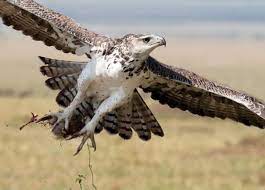
As a top predator of the Kalahari skies, the martial eagle boasts incredible strength and keen eyesight. These raptors are known to hunt a variety of prey, from small mammals to birds, using their powerful talons to capture and kill. Their ability to cover vast distances in search of food reflects the resourcefulness required to thrive in the expansive desert landscape.
Sociable Weaver:

The sociable weaver is a master builder of intricate nests, often creating massive communal structures that house multiple generations. These nests serve as a testament to their cooperative nature and the importance of social bonds in the Kalahari’s harsh conditions. By constructing these nests in camel thorn trees, the sociable weavers find safety and shelter in an otherwise challenging environment.
Kalahari Scrub Robin:

This small, inconspicuous bird is a symbol of the desert’s resilience. Despite its unassuming appearance, the Kalahari scrub robin’s melodic song fills the air and adds to the desert’s rich soundscape. Its ability to extract insects from the arid ground showcases its adaptability and resourcefulness.
Pale Chanting Goshawk:

The pale chanting goshawk is a raptor that thrives in the Kalahari, using its keen vision to spot prey from great distances. This bird of prey has adapted to the desert’s conditions by incorporating both small mammals and reptiles into its diet, demonstrating the diversity of survival strategies in the harsh environment.
Kori Bustard:

As the heaviest flying bird, the kori bustard holds a significant place in the Kalahari’s ecosystem. Its large size and distinctive courtship displays make it an impressive sight. While they primarily feed on insects and small animals, they also forage on plants, emphasizing their ability to adapt their diet to the available resources.
Puff Adder:

The puff adder, a venomous snake, navigates the Kalahari’s landscape with its well-camouflaged appearance and ambush-hunting tactics. Its presence is a reminder of the intricate web of life in the desert, where even predators must find a balance between their own survival and their role within the ecosystem.
Cape Cobra:
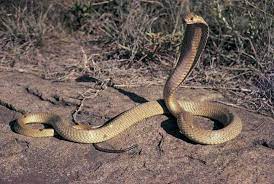
The Cape cobra is another venomous snake that resides in the Kalahari, adapting to the desert’s conditions by seeking shelter during the hottest parts of the day. Its potentially lethal bite and effective hunting abilities highlight the challenges and coexistence of life in the harsh desert environment.
Namaqua Chameleon:

The Namaqua chameleon, a master of camouflage, exemplifies adaptation to the Kalahari’s changing landscape. Its ability to change color helps it regulate its body temperature and evade predators. Its specialized feet enable it to navigate the desert sands, showcasing nature’s remarkable solutions for survival.
Horned Adder:
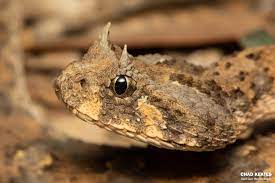
The horned adder is a venomous snake that relies on ambush predation to capture its prey. Its unique horns and cryptic coloration aid in both hunting and protection from predators. This species underscores the diversity of the desert’s inhabitants and their ability to carve out niches in a challenging environment.
Desert Rain Frog:

The desert rain frog, with its distinct appearance and adorable squeaks, offers a different perspective on the desert’s inhabitants. This small amphibian emerges from its burrow after rainfall to feed on insects and mate. Its presence highlights the interconnectedness of life cycles in the Kalahari.
Dung Beetle:
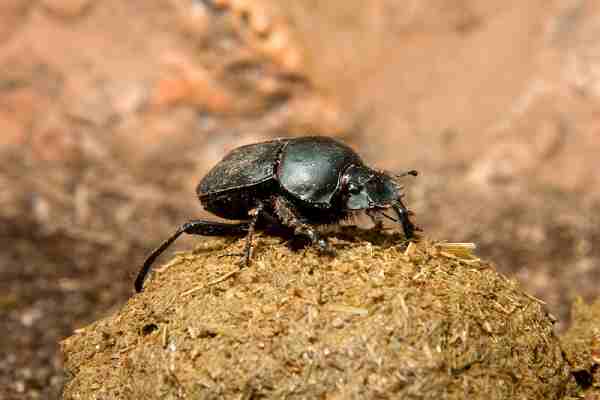
Dung beetles play a crucial ecological role in the Kalahari by recycling nutrients and aiding in soil health. These industrious insects form characteristic balls of dung, which they roll away to bury and use as a food source. Their actions contribute to nutrient cycling and soil aeration in the desert ecosystem.
Kalahari Desert Scorpion:
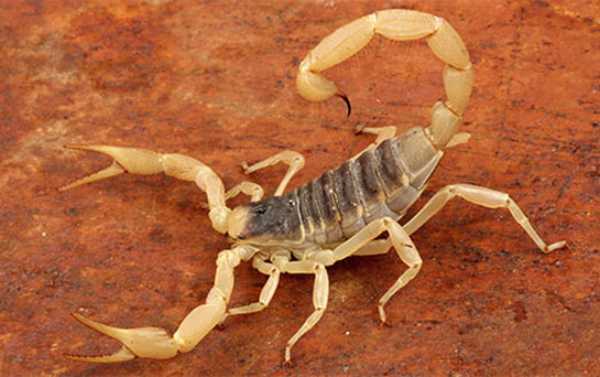
Adapted to nocturnal life, the Kalahari desert scorpion is equipped with venomous stingers to capture its prey and defend against threats. Despite its formidable appearance, this arachnid is a key component of the desert’s food chain, preying on insects and other small invertebrates.
Mantis:
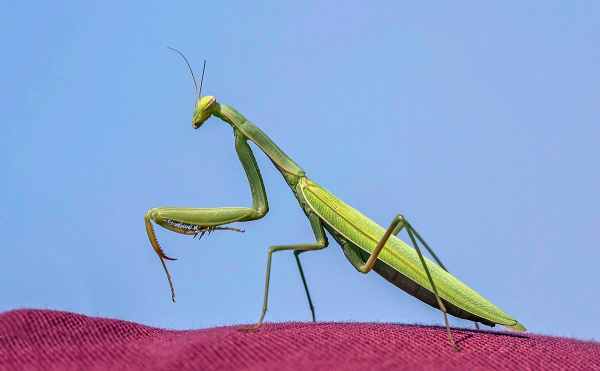
The praying mantis, with its distinctive stance and predatory behavior, thrives in the Kalahari’s diverse habitat. These insects are skilled hunters, using their specialized forelimbs to catch and consume a variety of prey, including other insects. Their presence contributes to the desert’s intricate web of interactions.
Kalahari Tent Tortoise:

The Kalahari tent tortoise is well adapted to the desert’s conditions, relying on its ability to burrow and aestivate during periods of extreme heat or drought. This tortoise plays a role in maintaining the desert’s ecosystem by dispersing seeds as it feeds on various plants.
Camel Thorn Tree:

The camel thorn tree, a hardy and iconic plant of the Kalahari, provides vital sustenance to various animals. Its nutritious pods are a significant food source, particularly during dry periods. The tree’s adaptability to the desert’s conditions makes it a valuable component of the ecosystem.
Quiver Tree:

The quiver tree, known for its unique appearance and historical significance to indigenous cultures, has adapted to the Kalahari’s harsh environment. These trees store water in their thick trunks and can survive long periods of drought. Their striking silhouette against the desert landscape adds to the region’s distinct character.
Hoodia Plant:

The hoodia plant, native to the Kalahari, has gained attention for its potential appetite-suppressing properties. Traditionally used by local communities, this plant showcases the desert’s hidden resources and the knowledge of its inhabitants.
Devil’s Claw Plant:

The devil’s claw plant, with its distinctive hooked fruits, is another valuable botanical resource of the Kalahari. It has been used for its medicinal properties by local cultures. This plant’s adaptations to the arid conditions underscore its role in traditional practices and potential pharmaceutical applications.
Unique Ecosystem and Adaptations:
The Kalahari’s ecosystem thrives on adaptability. Iconic species like the meerkats exhibit remarkable social behavior, living in tight-knit family groups and taking turns as sentinels to watch for predators. The black-maned Kalahari lions have evolved to withstand both extreme heat and extended water scarcity, relying on a diet that includes smaller prey.
The aardvark, a nocturnal insectivore, has developed strong claws for digging into termite mounds. The gemsbok’s streamlined body and efficient water-conservation mechanisms allow it to traverse the arid landscape. These adaptations illustrate the intricate balance between life and the environment, showcasing nature’s ingenious solutions for survival in one of the world’s most challenging habitats.
Adaptations for Survival in the Kalahari Desert:
Life in the Kalahari Desert demands extraordinary adaptations from its inhabitants. From the camel thorn tree’s ability to store water to the gemsbok’s efficient water-conservation mechanisms, survival strategies have evolved over millennia. Animals like the meerkat exhibit sentinel behavior for communal protection, while reptiles like the horned adder employ cryptic coloration.
These adaptations not only highlight nature’s resilience but also emphasize the interconnectedness of life within this harsh environment. From anatomical features to behavioral traits, the desert’s inhabitants have honed their abilities to overcome challenges and flourish in the face of adversity.
Indigenous Peoples and the Kalahari Desert Wildlife:
Indigenous communities have deep-rooted relationships with the Kalahari’s wildlife. For generations, they have relied on the land’s resources and developed sustainable practices in harmony with nature. The San people, for instance, possess intimate knowledge of the desert’s plants and animals, using their wisdom to navigate and survive.
Their cultural significance underscores the intricate ties between people and wildlife in the desert. However, modern pressures, such as habitat loss and encroachment, threaten these traditional lifestyles and the preservation of this vital knowledge.
Conservation Challenges and Efforts:
Conserving the Kalahari’s unique wildlife faces multifaceted challenges. Habitat degradation, poaching, and human-wildlife conflicts pose significant threats. Conservation efforts involve collaboration between governments, local communities, and organizations.
Initiatives like protected areas and anti-poaching campaigns aim to safeguard endangered species such as the black rhino and African wild dog. Balancing conservation with the needs of local communities remains an ongoing challenge, requiring sustainable solutions that address both ecological and socioeconomic concerns.
Ecotourism and the Kalahari Desert Wildlife:
Ecotourism offers a potential win-win scenario for both wildlife conservation and local economies. The Kalahari’s charismatic fauna, from lions to meerkats, attract nature enthusiasts seeking responsible wildlife encounters. Thoughtfully managed ecotourism generates income for local communities, fostering an incentive for safeguarding the natural environment.
However, the delicate balance lies in ensuring tourism doesn’t disrupt ecosystems or harm wildlife. Proper regulations, education, and community involvement are essential to harnessing ecotourism’s potential while ensuring the long-term well-being of the Kalahari’s unique inhabitants.
Research and Scientific Discoveries:
Scientific exploration of the Kalahari Desert reveals a wealth of discoveries. Researchers uncover adaptations, migration patterns, and inter-species relationships that shed light on the intricate web of life. Advances in technology allow for non-intrusive observation, leading to insights into behaviors like the social dynamics of meerkats or the hunting strategies of cheetahs.
Scientific inquiry not only enhances our understanding of the desert’s ecosystem but also informs conservation strategies. Collaborative efforts between scientists, conservationists, and local communities contribute to a more comprehensive picture of the Kalahari’s intricate biodiversity.
Future of Kalahari Desert Wildlife:
The future of Kalahari’s wildlife rests on collective efforts to address conservation challenges, uphold indigenous knowledge, and promote sustainable practices. Climate change poses additional threats, altering habitats and the availability of resources. Protecting corridors for migration and maintaining genetic diversity becomes paramount.
The engagement of local communities, fostering eco-friendly economic opportunities, and continued scientific research will shape the trajectory of the desert’s inhabitants. The journey toward a harmonious coexistence between humans and wildlife necessitates an unwavering commitment to preserve the natural heritage of the Kalahari Desert for generations to come.
Final Words:
The Kalahari Desert, with its stark beauty and astonishing biodiversity, encapsulates the tenacity of life in the face of adversity. From the cunning adaptations of meerkats to the regal presence of African elephants, the desert’s wildlife embodies nature’s resolute spirit. As conservation efforts and scientific research deepen our understanding, the intricate relationships between organisms and their environment come to light.
Collaborative solutions that embrace traditional knowledge and innovative approaches offer hope for the survival of both iconic species and fragile ecosystems. The future of the Kalahari’s wildlife hinges on the choices we make today – choices that echo through generations, ensuring that this unique desert landscape continues to teem with life and wonder.
Reference:
- https://www.worldatlas.com/articles/animals-of-the-kalahari-desert.html
- https://www.true.travel/journal/kalahari-desert-animals/
- https://www.khamab.co.za/the-kalahari-khamab

Zahra Makda
Growing up enjoying the beauty of my village, a good passion for nature developed in me from childhood. Following my passion for the natural world, I have chosen zoology for my graduation, during my undergraduate degree, I participated in many nature trails, bird watching, rescues, training for wildlife conservation, workshop, and seminars on biodiversity. I have a keen interest in invertebrate biology, herpetology, and ornithology. Primary interests include studies on taxonomy, ecology, habitat and behavior.









